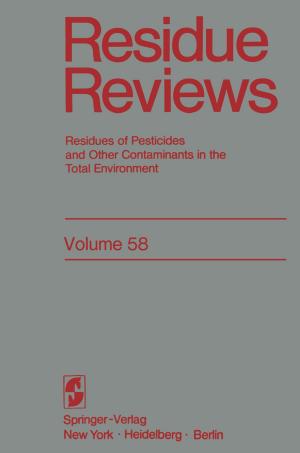Produced Water
Environmental Risks and Advances in Mitigation Technologies
Nonfiction, Science & Nature, Technology, Environmental, Science, Earth Sciences, Geology| Author: | ISBN: | 9781461400462 | |
| Publisher: | Springer New York | Publication: | September 18, 2011 |
| Imprint: | Springer | Language: | English |
| Author: | |
| ISBN: | 9781461400462 |
| Publisher: | Springer New York |
| Publication: | September 18, 2011 |
| Imprint: | Springer |
| Language: | English |
A state-of-the-art review of scientific knowledge on the environmental risk of ocean discharge of produced water and advances in mitigation technologies.
In offshore oil and gas operations, produced water (the water produced with oil or gas from a well) accounts for the largest waste stream (in terms of volume discharged). Its discharge is continuous during oil and gas production and typically increases in volume over the lifetime of an offshore production platform.
Produced water discharge as waste into the ocean has become an environmental concern because of its potential contaminant content. Environmental risk assessments of ocean discharge of produced water have yielded different results. For example, several laboratory and field studies have shown that significant acute toxic effects cannot be detected beyond the "point of discharge" due to rapid dilution in the receiving waters. However, there is some preliminary evidence of chronic sub-lethal impacts in biota associated with the discharge of produced water from oil and gas fields within the North Sea.
As the composition and concentration of potential produced water contaminants may vary from one geologic formation to another, this conference also highlights the results of recent studies in Atlantic Canada.
A state-of-the-art review of scientific knowledge on the environmental risk of ocean discharge of produced water and advances in mitigation technologies.
In offshore oil and gas operations, produced water (the water produced with oil or gas from a well) accounts for the largest waste stream (in terms of volume discharged). Its discharge is continuous during oil and gas production and typically increases in volume over the lifetime of an offshore production platform.
Produced water discharge as waste into the ocean has become an environmental concern because of its potential contaminant content. Environmental risk assessments of ocean discharge of produced water have yielded different results. For example, several laboratory and field studies have shown that significant acute toxic effects cannot be detected beyond the "point of discharge" due to rapid dilution in the receiving waters. However, there is some preliminary evidence of chronic sub-lethal impacts in biota associated with the discharge of produced water from oil and gas fields within the North Sea.
As the composition and concentration of potential produced water contaminants may vary from one geologic formation to another, this conference also highlights the results of recent studies in Atlantic Canada.















